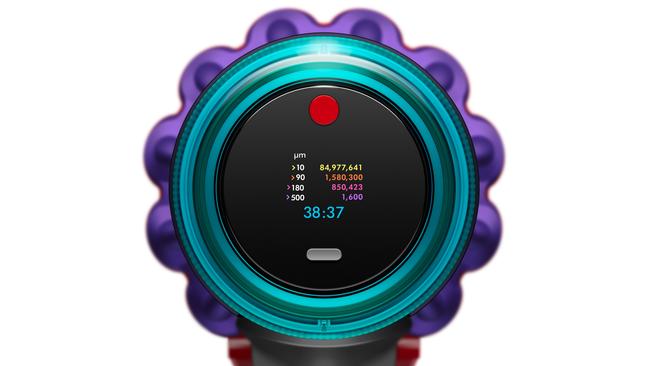Review: Does Dyson want us to vacuum in the dark?
We put Dyson’s next vacuum cleaner – which spins nine times faster than a Formula One car – to the test and see if it’s worth the price tag.

What has green lights and spins nine times faster than a Formula One car?
The answer, surprisingly, is not a vehicle at all, but rather Dyson’s newest vacuum, the Gen5detect, which will set you back a whopping $1,499.
At first, why anyone would attach a light to a vacuum was beyond me, as was the reason for choosing a green one at that.
Dyson claims it’s because it helps us to see dust better, even after vacuuming. And a simple test on some polished timber floors and carpet in Sydney’s inner west, we can attest to that.
On second thought, it actually makes a lot of sense, and follows the likes of power tool brand Milwaukee which has for over a decade put lights on its impact drivers among other drills.

The king of vacuum cleaners, which famously pulled the pin on its attempts to develop an electric vehicle, has instead released a vacuum which it claims has a motor that spins at 135,000rpm, which is, according to Dyson, nine times faster than a Formula One car engine.
Thankfully, it isn’t nine times as loud. It is a little louder than its counterpart, the Samsung Bespoke Jet.
Last year, The Australian discovered that vacuums are a hotly contested topic, one that many readers and industries professionals are happy to argue over who makes the best model.
On a mission to find who sucked more, we put the Gen5detect up against the Bespoke Jet to find out who does better in the dirt.
In the looks department, Samsung is a clear winner. Like most new tech products, it’s green and set with its own housing with a built-in charger and chamber emptier, it’s by far the most sleek.
But on the sucking front, it’s a closer match, as you might imagine.
The Australian put both devices to the test on an outdoor welcome mat, an entry mat within a hallway and on a carpet in a lounge room.
The devices varied on sucking power, with Gen5detect breaking down its modes into eco, auto and boost, meanwhile the Bespoke Jet had four modes which included min, mid, max and jet.
The Dyson gives the user some pretty great insight into what it is the device is vacuuming over, with details on microscopic fine, medium and coarse particles as well as a match-like update at the end, telling the user how many of each type of particle it had collected.

This, in comparison, is quite fancy compared to Samsung’s screen which gives indications of battery life.
Dyson claims its vacuum cleaner has delivering 262 air watts of powerful suction. The newest model – smaller, faster and more powerful than the previous model – can pick up dust particles as small as .1 microns.
In our test, we found the Dyson to have the strongest suction, with the ability to lift rugs on boost mode. Upon inspection of all three vacuumed surfaces, the Dyson appeared to do a better job at picking up finer dust particles.
The Samsung, however, did the best on the entry mat, removing more of the little seeds within the grooves of the mat. It’s also the model of the two you wouldn’t mind leaving out in its charging base. The Dyson, while sleek in its own way, is not as appealing when stored in its grey wall mount.
We found the Samsung a little easier to manoeuvre when moving the vacuum across the mat, but this could be in part because it appeared to have less suction power.
The verdict? Dyson remains king of the vacuum market for now, but his nearest enemy – or competitor – Samsung is a very close rival.
More Coverage








To join the conversation, please log in. Don't have an account? Register
Join the conversation, you are commenting as Logout